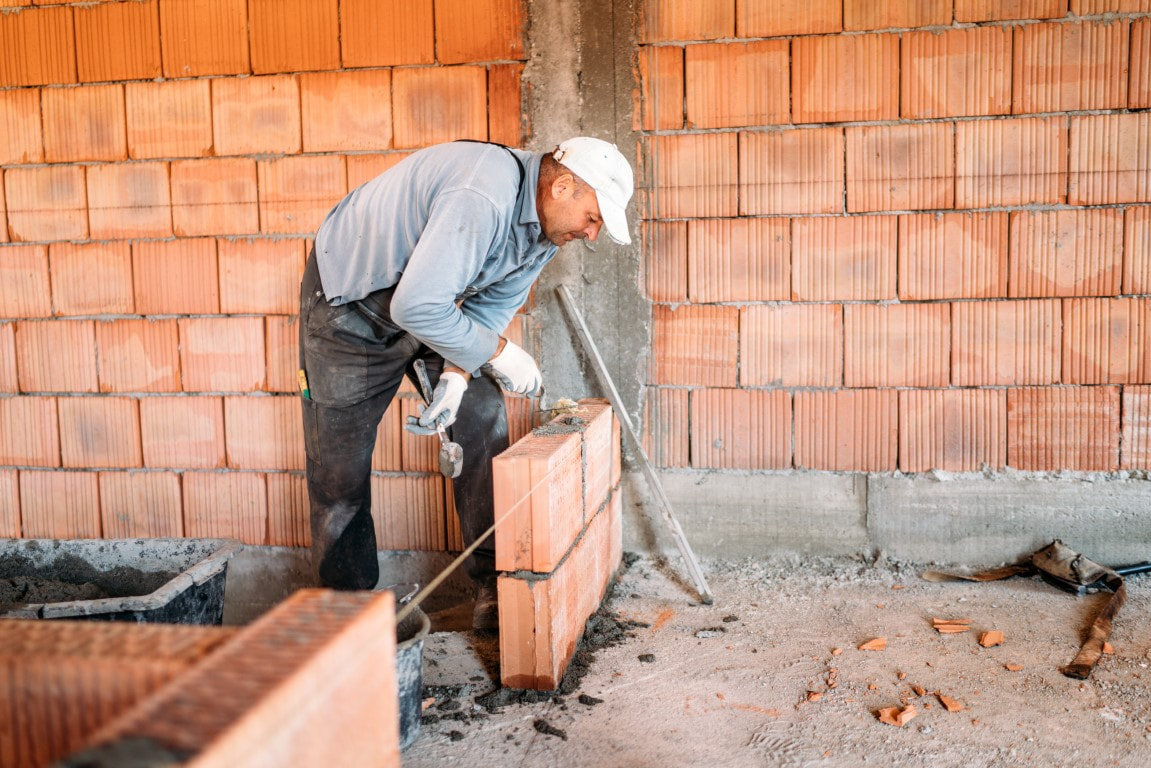Professional Step Repair Services: Ensure Safety And Security and Toughness
Opening the Keys of Sustainable Masonry Building And Construction Practices for Eco-Friendly Buildings
In the realm of modern-day building, the search of sustainable techniques has come to be critical. Among the myriad strategies to environmentally friendly structure, lasting masonry construction stands apart as a time-tested and long lasting approach that holds a wide range of untapped potential. From the choice of products to cutting-edge building strategies, the keys to attaining sustainability within masonry building are diverse and interesting. By checking out the advantages, products, methods, and future trends of lasting masonry, a much deeper understanding of exactly how these techniques can shape the future of environmentally friendly buildings emerges.
Advantages of Sustainable Masonry Building And Construction
Accepting sustainable stonework building methods not only minimizes ecological impact yet also supplies long-lasting financial advantages to contractors and neighborhoods. By making use of materials like recycled bricks, obstructs, and rocks, contractors can substantially decrease the carbon footprint of their projects while advertising source efficiency. In addition, lasting masonry building techniques, such as appropriate insulation and thermal mass properties, can improve energy effectiveness within structures, causing minimized functional costs in time.
Moreover, the longevity and resilience of masonry frameworks add to long-term economic advantages. Buildings built making use of lasting masonry methods usually require less repair and maintenance, equating to set you back financial savings for building contractors and building proprietors. The long life of stonework products likewise makes certain that structures stay stable and secure, reducing the need for constant renovations or substitutes.
Eco-Friendly Masonry Materials
Utilizing environment-friendly stonework products is an essential step in the direction of boosting the sustainability of building and construction practices and reducing environmental impact while taking full advantage of long-lasting economic benefits. Sustainable masonry materials are sourced, produced, and used in a way that decreases total environmental influence. Sustainable concrete blocks incorporate recycled accumulations and might feature improved insulation residential properties, contributing to energy effectiveness in buildings.
Furthermore, all-natural products like adobe, rammed planet, and straw bales supply outstanding thermal mass properties, lowering the need for heating and cooling down energy. These materials are commonly in your area readily available, promoting local economic situations and lowering transportation-related carbon discharges. By choosing eco-friendly stonework products, building jobs can significantly decrease their ecological impact and add to the creation of healthier, a lot more sustainable constructed atmospheres.
Energy-Efficient Masonry Methods
Energy performance plays an essential role in improving the sustainability of stonework construction methods. One vital energy-efficient masonry technique is the usage of thermal mass, which includes integrating thick products like concrete or block right into the building's structure to take in visit here and save warmth.

Developments in Sustainable Masonry
Current innovations in sustainable stonework practices have caused innovative techniques that are reshaping the building industry. One such advancement is the advancement of self-healing concrete, which utilizes bacteria embedded within the concrete to recover splits autonomously. This breakthrough not just decreases maintenance costs but likewise improves the toughness of masonry frameworks, adding to their sustainability.
An additional noteworthy technology is using recycled accumulations in masonry construction - masonry contractor. By incorporating products such as crushed ceramic waste or recycled glass into internet concrete mixes, home builders can lower the environmental influence of building jobs while keeping structural integrity. This practice not only draws away waste from landfills yet additionally saves natural deposits, making it a crucial innovation in sustainable masonry building
Moreover, the assimilation of digital style tools, such as Building Info Modeling (BIM), is changing the method masonry structures are intended and created. BIM enables more exact estimations, lowered product wastage, and improved energy efficiency, eventually resulting in more lasting building practices. These developments jointly represent an encouraging future for lasting stonework building and construction in the era of environmentally friendly structures.
Future Trends in Masonry Sustainability
With the innovative strides made in sustainable masonry methods, the future fads in masonry sustainability are positioned to additional change the building market. Among the essential trends forming the future of masonry sustainability is the boosted combination of technology. Developments such as Building Details Modeling (BIM) and digital truth simulations are being utilized to optimize masonry construction procedures, causing minimized product waste and enhanced energy effectiveness in buildings.
Moreover, the advancement of novel lasting materials is readied to play a substantial role in boosting the eco-friendliness of stonework building. masonry contractor. Innovations like self-healing concrete, recycled Going Here aggregates, and bio-based binders are acquiring traction for their ability to decrease environmental impact while maintaining structural stability

Conclusion
To conclude, sustainable masonry construction methods provide many advantages for environment-friendly structures. By making use of eco-friendly materials and energy-efficient techniques, masonry can contribute to an extra sustainable built environment. Advancements in sustainable stonework are continuously being created to better improve the ecological efficiency of buildings. Looking towards the future, the fad of masonry sustainability is expected to expand, leading to more eco-friendly and energy-efficient building methods in the years ahead.